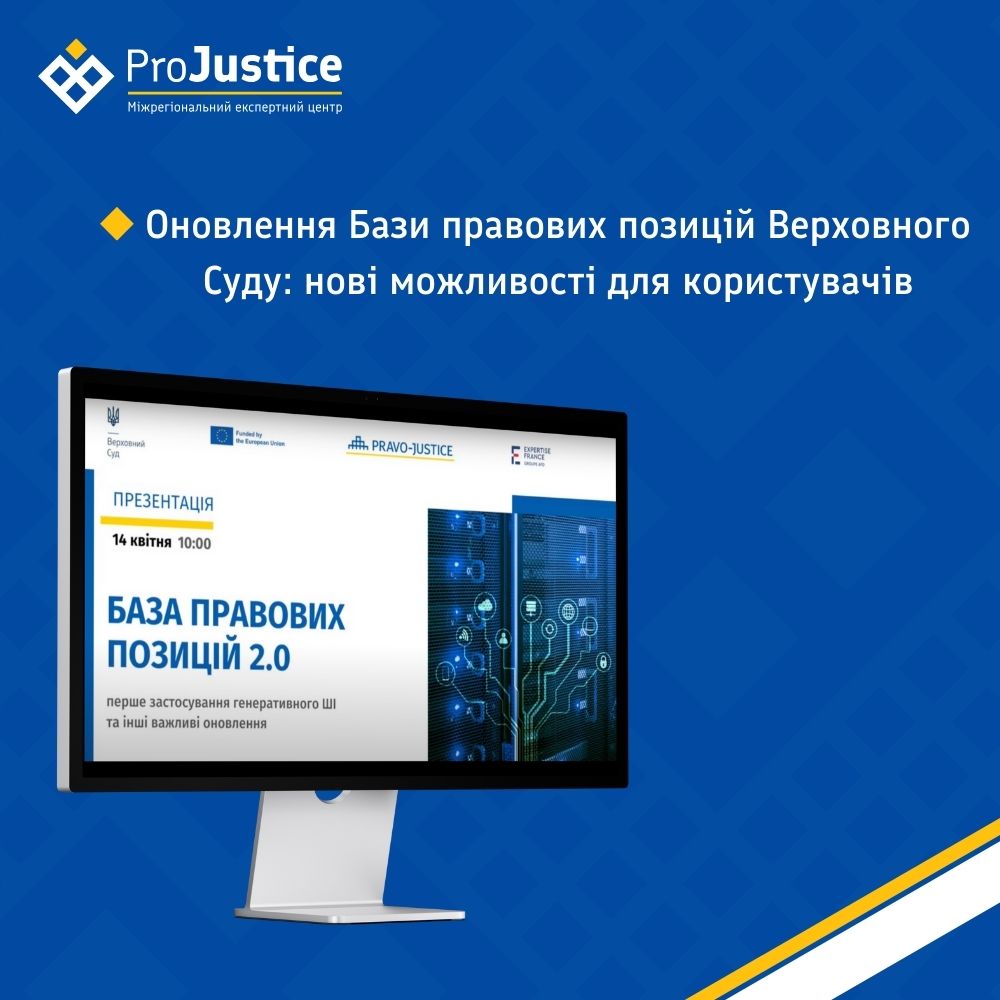An event bringing together judges, advocates, enforcement officers, and litigants to discuss the evolving practice of reporting on the execution in court decision enforcement recently took place in Odesa. The discussion also featured the first public presentation of exclusive research results and regional statistics on how this mechanism is applied across Ukraine.
Natalia Bohatska, President of the Association of Commercial Court Judges of Ukraine and Judge of the South-Western Commercial Court of Appeal, which hosted the event, opened with remarks that struck the core of the issue:
“Enforcement is not just the final stage of proceedings — it’s a measure of public trust in justice. It’s our shared duty to make this stage truly effective.”
Iryna Zharonkina, Head of the “Enforcement of Court Decisions and Protection of Property Rights” component of the EU Project “Pravo-Justice”, emphasized the significance of the research:
“This study is one of the key empirical tools for assessing how judicial oversight functions in Ukraine. For the first time, we can look at the data nationwide, understand how local courts apply the mechanism, and draw practical conclusions.”
She added that both European experience and Ukrainian data show that judicial oversight remains one of the most effective levers for improving the enforcement rate of court decisions.
The study’s findings were presented by Judge Olena Fonova (Commercial Court of Luhansk Region), co-founder and deputy chair of the NGO Pro Justice, and Roman Chumak, managing partner at Ares Law Firm and chair of Pro Justice. Their presentation summarized input from 460 respondents — judges, claimants, and defendants — revealing insights on systemic challenges: barriers in the enforcement process, reasons for non-execution, awareness levels, and respondents’ evaluation of judicial oversight effectiveness.
Supreme Court Judges Vitalii Zuiev and Yurii Chumak shared a view from the bench, noting practical complications for first-instance judges — including increased caseloads, additional judicial responsibilities, and the wide discretion courts now hold under the oversight mechanism, which may trigger a wave of appeals.
Judge Yurii Chumak also drew attention to enforcement bottlenecks such as moratoria, bankruptcy proceedings, and procedural fragmentation, stressing the need for more efficient remedies.
The first panel, dedicated to administrative jurisdiction, was opened by Judge Ella Kataieva (Odesa District Administrative Court) with her talk “Reports on the Execution of Judgements in Cases Against Public Authorities: Effective Oversight or Legal Formality?”. She presented case statistics and shared first-hand insights, particularly from pension-related disputes, noting when the mechanism serves justice — and when it doesn’t.
Serhii Izobilin, Deputy Head of the Legal Department at the Pension Fund of Ukraine in Odesa Region, detailed the enforcement challenges faced by state agencies, pointing out that the main bottleneck remains chronic underfunding of payment obligations under court decisions.
Advocate Oksana Krutoholova (Merezha Prava Law Firm) continued the discussion, asking whether judicial oversight truly delivers results in cases against state authorities:
“Courts increasingly grant applications for oversight, but that doesn’t necessarily mean real enforcement — especially in cases involving the Pension Fund.”
From the enforcement community, Valerii Prytuliak, private bailiff and head of the Training and Qualification Centre for Private Enforcement Officers, summed it up bluntly:
“We pass laws guaranteeing payments, but no budget allocations to back them. And the state still refuses to delegate such cases to private bailiffs.”
The second panel, “Reporting on the Execution of Judgements as a Litmus Test for Effective Enforcement in Private-Law Disputes”, opened with Judge Yuliia Skryl (Kyiv District Court of Odesa), who noted procedural inconsistencies and widespread flaws in how applications for oversight are drafted:
“General courts often have to return applications due to poor quality or procedural defects — the mechanism still lacks proper usage culture.”
Judges Nataliia Pryntsevska (Deputy Head, South-Western Commercial Court of Appeal) and Liliia Hrabovan (Commercial Court of Odesa Region) analyzed the situation in commercial justice.
“It’s too early to assess effectiveness,” Hrabovan said. “In our court, we’ve seen only four cases so far. The tool helps — but it’s not a silver bullet for enforcement.”
Pryntsevska concluded:
“Even if this mechanism helps execute just a small portion of judgments, it’s worth keeping. Winning a case is only half the battle — getting it enforced is the ultimate goal.”
Kateryna Karmazina, attorney, mediator, and associate professor, presented on “The Report on the Execution of Judgements Mechanism: Advocacy Tools in Commercial and Civil Litigation.” She highlighted why the mechanism remains underused by lawyers — chiefly, the lack of specialized training and imperfect legislative drafting.
In closing, Professor Tetiana Stepanova, Head of the Constitutional Law and Justice Department at Odesa National University, proposed ways to improve enforcement effectiveness — particularly through better accountability of enforcement officers.
Moderator Diana Yakovlieva, Head of the Ukrainian Bar Association’s Odesa Branch, wrapped up with a reflection that resonated in the room:
“Society expects the courts to fix what the legislature hasn’t. We’re facing a systemic gap — and the courts are once again the last line of hope.”
The discussion concluded with a forward-looking exchange on practical steps toward real enforcement of court decisions.
📌 The event was held under the EU Project “Pravo-Justice”, a technical assistance initiative implemented by Expertise France with the financial support of the European Union.


